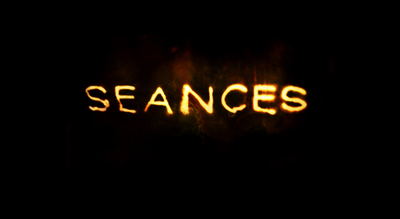
BY MORGAN SPURLOCK |
Biggie Smalls: Morgan Spurlock's Advice for Filmmakers
When it comes to making movies, the director of Mansome believes: "You should be ready and willing for your stories to live in places you never thought possible."

There was a time in the not-so-distant past when it was heresy for a movie star to sink low enough to work in the gutter of television. It was a medium for the masses, not for artists and auteurs. It felt disposable. It felt cheap. And if you crossed over to the small screen, it had the air of being relegated back into the minors.
It feels like a similar time for independent filmmakers. Today, we all claw for the same funding, jockey for the same distributors and hope for the same commercial release of our movies. We all want to believe that we have made a film that belongs in the theater, but what has become evident is that as more movies get made, even fewer of them will be lucky enough to find a home in the theatrical marketplace. Maybe someone steps forward and offers you a no-advance theatrical, promising a New York/LA qualifying Academy run, but is that what’s best for your movie?
Other films may not even find a home on television. So, as a filmmaker, what do you do? You’ve spent years telling this story to share with the widest of all possible audiences, but if you can’t break through with the network or studio gatekeepers to reach that audience, what’s the answer? For independent film distributors, it’s a simple matter of economics. Competing against big Hollywood rollouts—where films come into public knowledge with the assistance of multimillion-dollar marketing and advertising budgets—is impossible. They’ve changed their game, and as filmmakers, we should do the same.
There are a few things that I think we need to embrace at this juncture: an acceptance that we need to create more for less (lower budgets and shortened schedules), the idea that we are not only filmmakers but also film marketers, and an understanding of alternative distribution outlets, namely Internet or VOD partners that a few years ago had the same air of failure and backtracking that television once did.
One of the conversations I constantly have with filmmakers surrounds budgets. Whenever we do a budget for a movie, the first thing I ask is, “What else can we cut out?” Saving money at this stage will only help you later on, and it shouldn’t be done at the sacrifice of the creative. But be diligent: there’s always a way to cut and there’s always a way to save.
The second thing is filmmaker as promoter. In the independent world, we don’t have the luxury of a multimillion-dollar studio marketing department behind us. We are that marketing department, and you should start putting together your social media strategy from the minute you start filming.
Documentary filmmaker Lee Hirsch, whose film Bully is now one of the most talked-about docs of 2012, involved the community around his film from day one. They helped raise money, provided support, and connected the filmmaker with other groups who, now that the film is in release, became the biggest champions of his movie and its message. The greatest marketing team you have as an indie filmmaker is your own social network, and the more you can get them invested in the film and its success, the more chance you have of reaching an audience.
The last, and probably most important aspect today, is understanding the opportunities around alternative distribution strategies. Conventional wisdom used to be that releasing a film online was equivalent to dumping it in a digital landfill. That’s changed as platforms have evolved to accommodate new viewing habits. The hardest part is getting press coverage or “buzz” around these releases so that people know they exist. For a long time, news outlets would never talk about a web or VOD release, but as the market shifts, so is the media’s perception of these releases. Day-and-date releasing is becoming a more popular way for distributors to capitalize on press windows, but without significant pointers to these digital rollouts, audiences still have no idea they’re happening.
This again is why it’s important to have a social media strategy to marshal supporters who will share this information with their networks. When my film Comic-Con: Episode IV was released earlier this month, it was on every possible digital platform one day after its theatrical release. Comics fans across the country jumped on the release and drove people to various outlets to see the film, and within 24 hours it was the most watched independent film on iTunes.
But what kind of money can you actually make in these situations? While returns from most Internet distribution partners are small, they may also give you the ability to negotiate more favorably for yourself and the film: shorter license period, higher percentage on the split, limited release footprint, or retention of other venues (such as DVD, TV, VOD, or international) where further value from this web release may be created. And as our television and web become one viewing experience, all part of “the stream,” you will see those numbers continue to increase. What is also helping this? The migration of massive A-List talent to the littlest of the little screens. David Fincher is working with Netflix. Tom Hanks is producing for Yahoo! With more talent like this making the commitment to web networks, audiences and financial upsides will follow.
We all want our films to play in movie theaters in front of packed crowds. That’s the dream we as filmmakers all share. But at the end of the day, the thing you should really remember is that you want to make a living. You want this to be a career. You want to tell stories for the rest of your life. To do that, you should be ready and willing for your stories to live in places you never thought possible. You should be willing to take chances. And while some people may think you are sacrificing quality or that you are being relegated to the latest “gutter” for filmmakers, I think you’re doing the smartest thing possible… because you’re living to film another day.
Catch Morgan Spurlock at Tribeca:
♦ Mansome premieres on April 21.
♦ He will participate in a free industry panel on April 23: The Future is Short: Storytelling in the Digital Age
♦ His company, CINELAN, will host a free screening of nine short films on April 25, followed by a filmmaker Q & A and reception: Focus Forward – Short Films, Big Ideas

